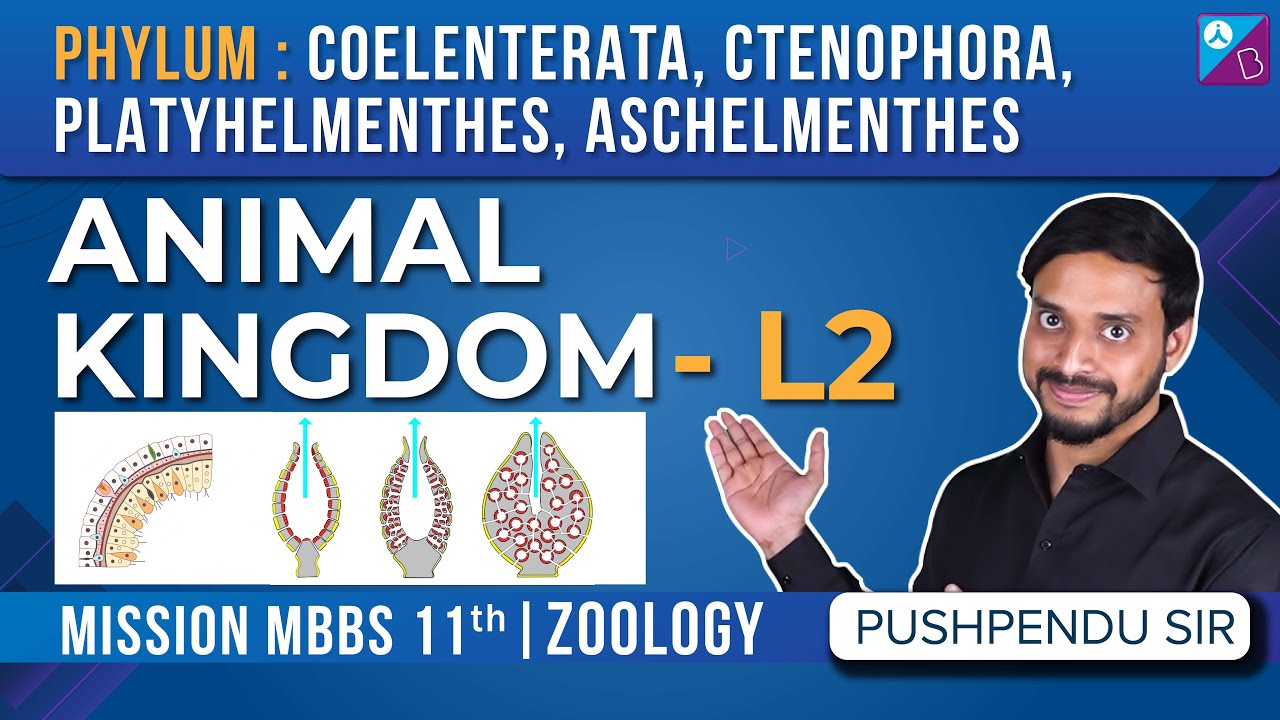The broad classification of Kingdom Animalia into Vertebrates and Invertebrates further leads to many divisions. There are several phyla under Invertebrates, two of the most primitive being Phylum Coelenterate and Platyhelminthes.
The differentiating factor between Coelenterata and Platyhelminthes is the germ layers in the entities. While members belonging to the Phylum Platyhelminthes are triploblastic invertebrates, members belonging to the Coelenterates Phylum are diploblastic.
Coelenterates
- Also referred to as Cnidaria, the Phylum Coelenterata constitutes the most primitive type of invertebrate
- These aquatic entities are diploblastic entities, possessing endoderm (forms the inner lining of the body) and ectoderm (One layer makes up the cells outside the body)
- Distinguished by a digestive cavity forming the main body, these include corals (usually colonial), hydroids, sea anemones (solitary) and other members
- These are jelly-like, radially symmetric, possessing a nerve net and an opening (the hypostome) girdled by sensory tentacles, usually having either colloblasts or nematocysts capturing planktonic prey
- The members are devoid of a special circulatory system and instead depend on diffusion through the layers of tissues
- Regeneration takes place, and reproduction is by sexual and asexual modes
- E.g., Hydra, Xenia, Rhizostoma, etc.
Platyhelminthes
- Flatworms, as they are commonly referred to, are comparatively simpler invertebrates with an unsegmented, bilaterian and soft body. The body has a soft covering with or without cilia
- These are acoelomates and lack a special circulatory or respiratory structure. This restricts them to depict a flat shape allowing nutrients and oxygen to pass through their bodies through the process of diffusion
- For ingestion and egestion, the digestive cavity has one opening only
- These are generally parasitic, triploblastic entities wherein the ectoderm is specialized with an evident epidermis
- They are hermaphrodites – both male and female reproductive cells are present in the same body
- Example – Taenia solium, Planaria, Schistosoma, Fasciola
Key Difference between Coelenterates and Platyhelminthes
The table below depicts the difference between Coelenterates and Platyhelminthes.
|
Coelenterates |
Platyhelminthes |
| What are they? | |
| A primitive type of invertebrates, these diploblastic entities comprise the endoderm and ectoderm only | Usually parasitic, these are triploblastic entities wherein the ectoderm is very
specialized having an evident epidermis |
| How does it occur in nature? | |
| Free-living, solitary and sedentary forms | Parasitic and free-living forms |
| What type of symmetry does it show? | |
| Radial | Bilateral |
| Cellular organization | |
| Tissue level organization | Organ level organization |
| Special structures | |
| Possess nematocysts | Pro-nephridia with flame cells |
| Are cnidocytes present? | |
| Yes | No |
| Is coelom present? | |
| Yes | No |
| How is fertilization? | |
| External and internal | Internal |
| Members | |
| Corals, hydroids, sea anemones | Planaria |
You read some differences between Coelenterates and Platyhelminthes. For more such articles, visit us at BYJU’S NEET.
More here:

Comments